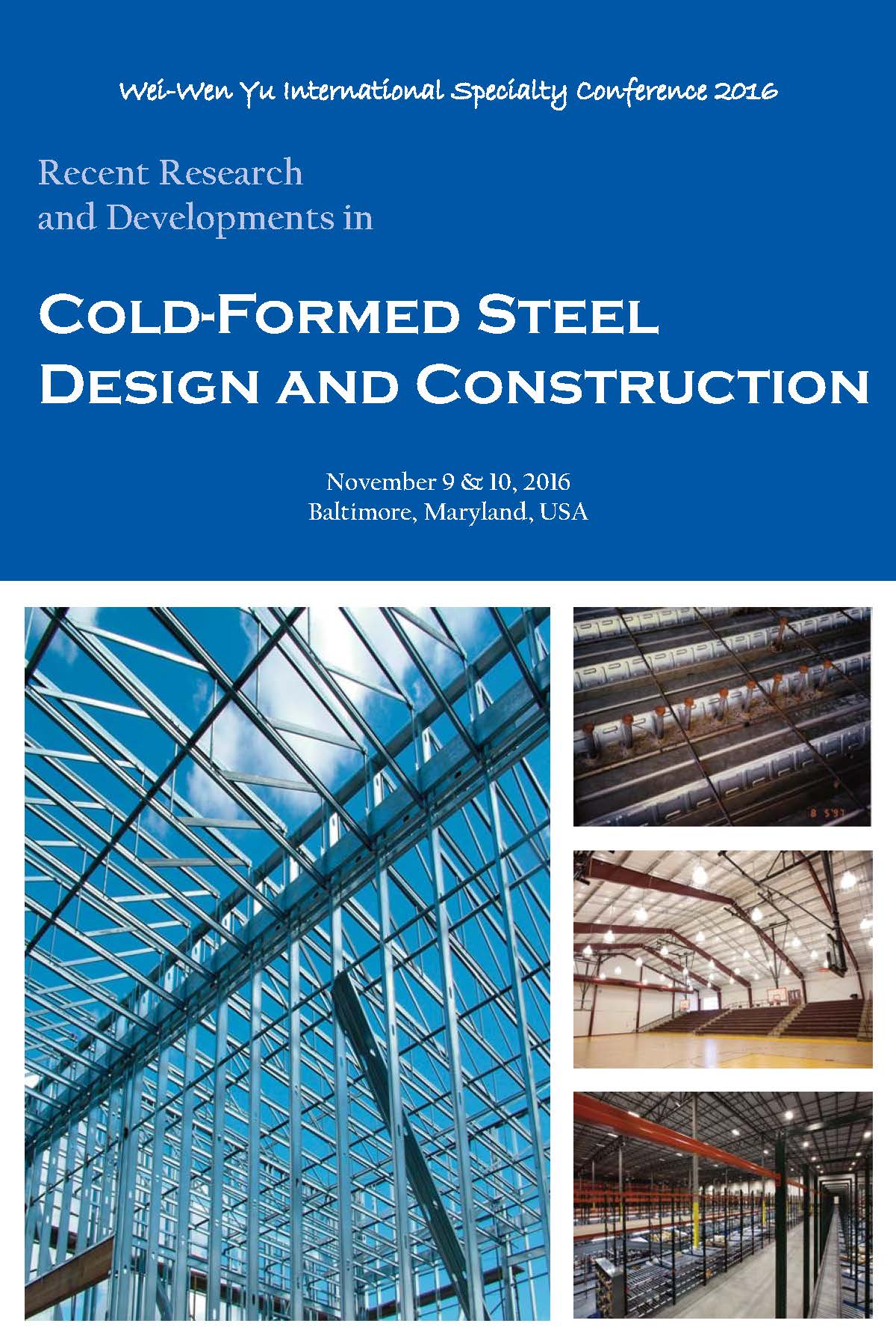Session Dates
10 Nov 2016
Abstract
Land subsidence phenomenon due to ground water withdrawal is a current problem in many places around the world, particularly in the shallows of Mexico. This causes ground differential settlements that affect structures, mainly dwellings and buildings based on reinforced concrete and masonry. Eventually, these structural materials do not exhibit an adequate performance beyond a certain level of angular distortion. This work presents the experimental and numerical results about a study regarding the performance of a full-scale thin-walled cold-formed steel building affected by angular distortions simulating ground differential settlements due to land subsidence. The experimental stage consisted in the design and construction of a laboratory facility (hidro-mechanical device) which is able to reproduce differential settlements in laboratory as well as the construction of a full-scale one story building over this device, in order to test the building to differential settlements. The numerical stage consisted in modelling the building in non-linear structural analysis software, considering all the geometrical and mechanical properties, such as rotational stiffness, moment-rotation curves (based on the direct strength method), etc. A numerical non-linear static pull-down analysis was performed producing several degrees of angular distortion simulating the same differential ground settlements that the full-scale building constructed over the experimental device. The experimental and numerical results show that the structural performance of the tested building was very suitable in terms of ductility, since the structure was able to support large angular distortions without suffering considerable damages. Lastly, using structures based on cold-formed steel would be suitable to reduce damages and guarantee structural safety in structures constructed in zones affected by ground settlement due to land subsidence.
Department(s)
Civil, Architectural and Environmental Engineering
Research Center/Lab(s)
Wei-Wen Yu Center for Cold-Formed Steel Structures
Meeting Name
International Specialty Conference on Cold-Formed Steel Structures 2016
Publisher
Missouri University of Science and Technology
Document Version
Final Version
Rights
© 2016 Missouri University of Science and Technology, All rights reserved.
Document Type
Article - Conference proceedings
File Type
text
Language
English
Recommended Citation
Ortiz-Lozano, Jose A.; Hernández-Castillo, Luis A.; Hernández-Marín, Martin; Pacheco-Martínez, Jesús; Zermeño-deLeón, Mario E.; and Salinas-Salinas, Raúl, "Full-Scale Experimental and Numerical Study about Structural Behavior of Thin-Walled Cold-Formed Steel Building affected by Ground Settlements due to Land Subsidence" (2016). CCFSS Proceedings of International Specialty Conference on Cold-Formed Steel Structures (1971 - 2018). 5.
https://scholarsmine.mst.edu/isccss/23iccfss/session11/5
Full-Scale Experimental and Numerical Study about Structural Behavior of Thin-Walled Cold-Formed Steel Building affected by Ground Settlements due to Land Subsidence
Land subsidence phenomenon due to ground water withdrawal is a current problem in many places around the world, particularly in the shallows of Mexico. This causes ground differential settlements that affect structures, mainly dwellings and buildings based on reinforced concrete and masonry. Eventually, these structural materials do not exhibit an adequate performance beyond a certain level of angular distortion. This work presents the experimental and numerical results about a study regarding the performance of a full-scale thin-walled cold-formed steel building affected by angular distortions simulating ground differential settlements due to land subsidence. The experimental stage consisted in the design and construction of a laboratory facility (hidro-mechanical device) which is able to reproduce differential settlements in laboratory as well as the construction of a full-scale one story building over this device, in order to test the building to differential settlements. The numerical stage consisted in modelling the building in non-linear structural analysis software, considering all the geometrical and mechanical properties, such as rotational stiffness, moment-rotation curves (based on the direct strength method), etc. A numerical non-linear static pull-down analysis was performed producing several degrees of angular distortion simulating the same differential ground settlements that the full-scale building constructed over the experimental device. The experimental and numerical results show that the structural performance of the tested building was very suitable in terms of ductility, since the structure was able to support large angular distortions without suffering considerable damages. Lastly, using structures based on cold-formed steel would be suitable to reduce damages and guarantee structural safety in structures constructed in zones affected by ground settlement due to land subsidence.



